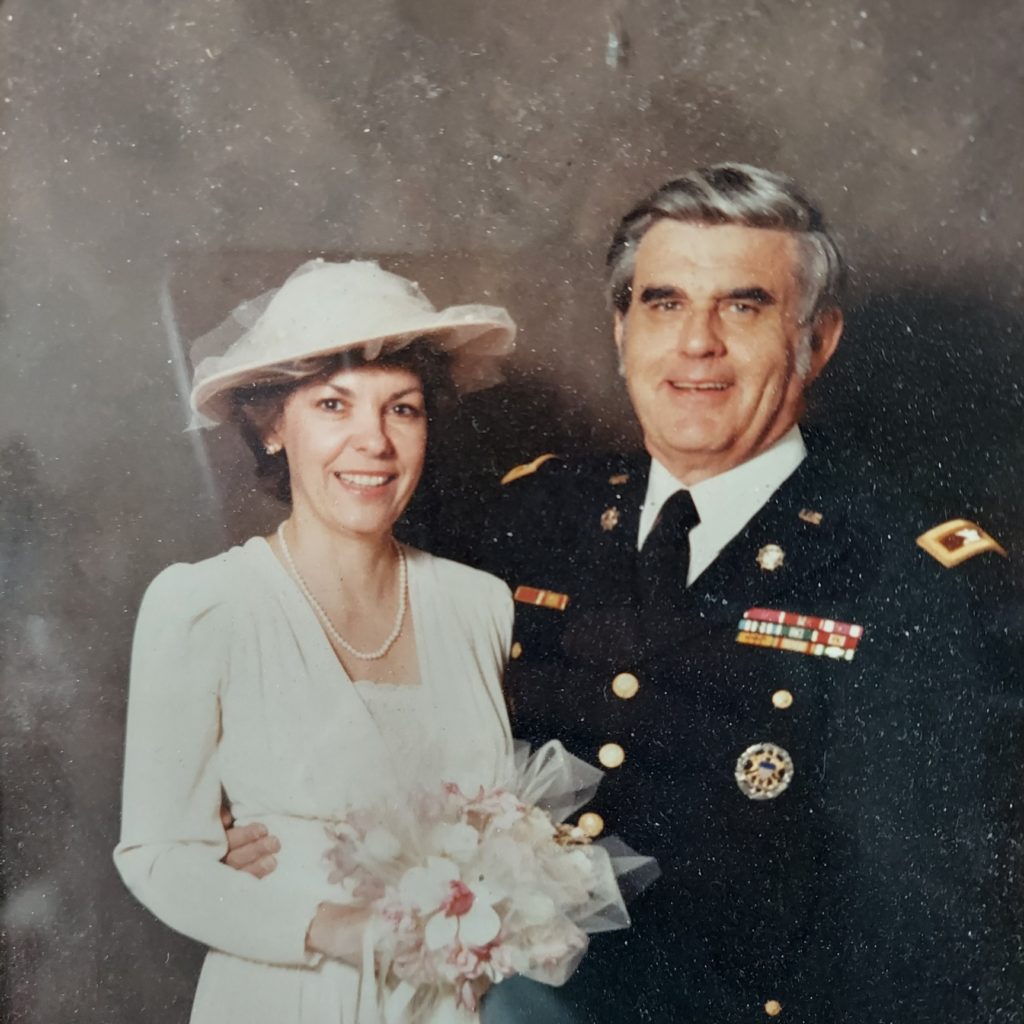Uncle Mike, my last uncle, died today.
But this isn’t one of those ’Oh my god how tragic’ kind of deaths. Uncle Mike saw his coming, and treated it like everything else in his life: directly, unflinchingly.
A career Army man who entered a private and retired a decorated colonel, Uncle Mike was just as tough at home. When his 91-year-old body began the final decline, he moved my Aunt Lessie into a smaller house a few blocks away because it would mean less upkeep. When he learned that his kidney failure would not relent, he opted for in-home hospice: easier to have the gutters fixed and roof replaced. He knew his wife would lose a couple military pensions with his death, and indulged in a new sofa, a rare extravagance for him.
You could forgive him any straight laces. Uncle Mike went directly from military school to the military, volunteering for the Korean War. But fighting had stopped around boot camp. By the time he was sent to Vietnam, he was commanding officers in the Army’s 200-truck convoys that ran supplies to troops inland.
That’s according to Wikipedia, which also said this: “One unit that often fell victim to attacks was the 8th Transportation Group, based in Qui Nhon. Two dangerous stretches of Route 19…became the enemy’s favorite kill zones, (nicknamed) the ‘Devil’s Hairpin’ and ‘Ambush Alley’ as incidents occurred there on an almost daily basis.”
Uncle Mike’s route.
But when Uncle Mike he showed me war photos, he just said it could ”get hairy” in a single-lane jungle convoy. Later, Aunt Lessie sent me a video about the gun trucks of Vietnam from the History Channel.
Nowadays, the show said, gun trucks — boasting M60s, .50-calibre machine guns and even anti-aircraft RPGs — are common sights in military incursions.
But back then, the medals say, Uncle Mike helped create the proto-gun truck. ”Just sandbags and 2-by-2s” to keep escort jeeps flip-and bullet-resistant, is the way he put it. Reminiscing would still get Uncle Mike misty eyed, especially recalling a particular mess hall cook killed during a raid.
When he retired, he became City Manager of North Charleston, S.C., and oversaw construction of the state’s first professional hockey stadium for the South Carolina Stingrays, the state’s first pro hockey team. When he REALLY retired, the city set him up with plum season tickets.
He took me to a game once, and pointed out his favorite player, Marcus Perrier, an ex-NHL athlete who still played in the minor leagues and handed out bare-knuckled lessons to young upstarts who thought they were all that. ”He’s not afraid to drop his gloves,” Uncle Mike would say.
A few days later, he presented me with a bobblehead — Perrier’s. Even the statue shows Perrier with gloves dropped, dukes at the ready. I call it the ’Tough Mike’ bobblehead, and it sits atop my photo shelf, along with a Cuban cigar Mike and Lessie sneaked past Customs.
Today, Uncle Mike died.
So, Col. Quenton T. Martin: I drop gloves and salute you. You stood your ground until the ground gave way. Safest passage North, sir.




